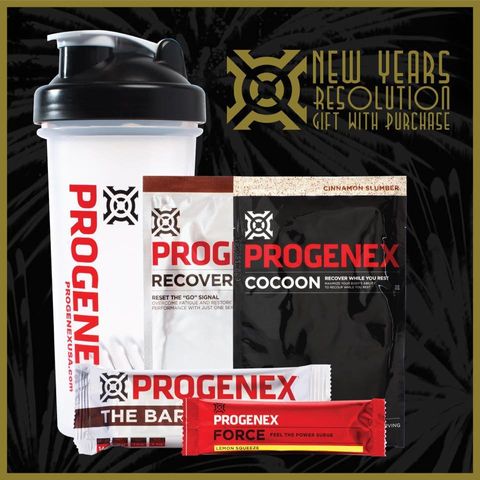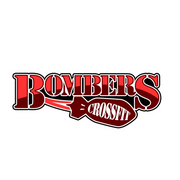
It’s no secret that in order to build muscle, you need to work muscle. After all, you’re not going to achieve demigod-like physique by sitting on the couch all day. So you go to the gym. You rip through your workout regimen. You push yourself through the pain. And, when you’ve wiped down the machines and hit the showers, you feel like you’ve done your part. But there is an aspect of training that often gets overlooked, and that aspect is recovery.
To some extent, this is completely understandable. After all, in the mind of the casual exercise-enthusiast, recovery is something that just sort of happens. A good night’s rest will generally replenish any energy that was spent during a difficult workout, and through the process of muscle repair, damaged muscle tissue is able to be rebuilt and reinforced. The end result is that the average gym-goer is able to return to their exercises within a day or two, and feel recovered enough to continue with their strength training.
But are they actually recovered enough? Studies suggest that they might not be. You see, following any workout, the body develops micro-tears in its muscle tissue. And while those who rest, wait, and then resume their exercises a day or so later may feel as though their bodies have recovered enough to begin again, the reality is that microscopic damage to the tissue may not yet be fully healed. As this damage continues to accumulate, those who workout risk subjecting their bodies to potentially debilitating injuries.
And for those who are more than just casual exercise-enthusiasts, specifically those who train more often than once per day, recovery becomes even more important—and more proactive.
What nutritionists and sports medicine experts are starting to really grasp is that the most optimal recovery can’t simply be left to the body’s natural processes. Instead, specific nutritional supplements are required to ensure a faster, more-effective recovery. To better understand this concept, let’s take a look at the two different types of recovery, and see exactly how supplemental nutrition can be used to decrease physical recovery times.
Force-Loss Recovery
As the easier-to-identify of the two types of recovery, force loss is a result of muscles being pushed to their literal breaking point. When muscles are subjected to intense training, the muscle fibres become damaged. The body attempts to respond to this damage as it would any other injury, by reallocating healing resources to the damaged area. Digested protein is used, and muscle fibers (myofibrils) are fused together to create new muscle protein strands. This is accomplished through protein synthesis (a series of chemical reactions in which molecules are brought into contact, allowing the formation of chemical bonds). As the new fibers are being created, the body attempts to adapt to existing conditions, so as not to have to suffer further future injury. To this end, it over-compensates, building muscle tissue that is stronger and larger than the tissue that was damaged. Of course, the aim of continued exercise is to then introduce more severe stress to the new muscles, resulting in more damage to myofibrils, and thus necessitating an ongoing process of repair and refortification, leading to muscles of noticeably increased strength, size, and definition. Still, there’s no getting around the fact that in order to prompt the repair process, the muscles first have to be broken down, which means that as one proceeds through the workout, they find that they are able to generate less and less force. This ‘force loss’ is what keeps the human body from being able to do an unlimited number of push-ups, no matter how capable it is at ignoring pain. Eventually, the muscles simply are not able to achieve the force necessary to accomplish even one more rep. Now, at this point, the body is supposed to take over and begin the repair work. Unfortunately, the natural repair process isn’t perfect, and certain nutritional supplements are needed to be introduced within a very narrow window of time to ensure the greatest amount of recovery. As such, certain supplements can help speed recovery to the point where even high-intensity, nearly back-to-back workouts become a possibility. This is accomplished thanks to special, easier to metabolize whey protein. By supplying the body with a ready source of high-quality hydrolyzed protein, it can quickly repair damaged muscle tissue without having to wait for the natural processes to break down protein on their own. The whey protein is first filtered, separating the original protein from all of its non-essential components (such as fat and lactose). This results in a pure form of protein called whey protein isolate. For best effect, the whey protein isolate is then subjected to hydrolization, where the pure protein is exposed to enzymes that break down the bonds that hold the amino acids together, separating the protein into easy-to-absorb-and-utilize peptide sequences. These ‘pre-digested’ sequences bypass the normal channels of digestion and metabolization, and are carried through the bloodstream directly to the damaged muscle tissue. Studies have concluded that hydrolyzed whey protein, when taken either directly before or directly following a workout, can help boost the body’s natural repair process. That means less down-time, and a much faster cycle of exercise and repair.
Energy-Loss Recovery
The second form of recovery has more to do with your body’s fuel sources, specifically glucose. In today’s lose-weight-without-exercising society, carbohydrates tend to be looked down upon. However, there are few energy sources as useful for creating sustained physical endurance. To understand this fact, let’s take a look at how your body uses fuel while you exercise:
As you begin your workout, your body uses glycogen that is stored within the muscle tissue as its primary fuel source. But as the workout continues, eventually those stores become depleted. When this happens, your body is forced to reallocate other resources towards powering your muscle tissue. Thus, it begins to break down stored fat deposits, as well as carbohydrates. This is good news for those who are exercising to lose weight, as it explains the process by which excess fat is ‘burned’ away with sustained training. Still, the original muscle glycogen is the prefered form of fuel for your muscles, as it is the most efficient energy source you have. But how can one ensure an ample supply of muscle glycogen? Well, as with most things exercise-related, you can train your body to produce and retain larger stores of muscle glycogen simply by depleting and then replenishing your stores (through regular, intense exercise). This is accomplished through a complex process, by which carbohydrates are converted into glycogen to be stored in muscle tissue. This process is made even more effective when dietary carbohydrates are made available when the process is occurring. This means that when carbohydrates are consumed directly following an intense workout, glycogen synthesis and storage are boosted to optimal levels. Carbohydrates can also be stored directly prior to an intense workout, thus helping increase available stores of muscle glycogen, and providing the body with excess carbohydrates for ongoing glycogen synthesis during exercise. This practice has come to be known as ‘carb-loading,’ and is a method embraced by many endurance exercisers (such as marathon runners). Of course, if stores of muscle glycogen aren’t being used and replenished, then consumed carbohydrates are stored elsewhere, first as glucose, and then as fat. So, a high-carbohydrate diet is only really beneficial for those who exercise enough to make use of it. Complex carbohydrates have the added bonus of providing solid energy to the body, without the ‘crash’ that comes from consuming simple sugars. By properly using carbohydrates, you can provide your body with the energy it needs to be able to exercise longer and harder, and you’ll also be able to significantly cut back on energy-loss recovery time.
CrossFit and the Need for Fast Recovery
CrossFit is a relatively new exercise phenomenon which relies on all metabolic pathways, and requires proficiency in gymnastics, monostructural (running, swimming, rowing etc.), and weightlifting (clean and jerk, snatch, deadlift, press, etc.) movements—regular strenuous workouts that recruit potentially every muscle group in the body. The sheer intensity of these workouts pushes the human body beyond its limits, and extends those limits in the process. The multiple modality approach to CrossFit allows you to train at a higher intensity more frequently when compared to single modality sports such as running, swimming, biking, bodybuilding or weight lifting alone. Despite this, the best CrossFit athletes are able to quickly recuperate from workouts that would leave most casual exercise enthusiasts completely unable to function. This is because CrossFit necessitates a heavier focus on recovery than is needed for most workout regimens.
Progenex has introduced two supplements that have helped to redefine what recovery means for CrossFitters. Progenex Recovery uses the highest quality hydrolyzed whey protein isolate, for quicker regeneration of muscle tissue. Studies have shown that those who use whey protein hydrolysates recover not only more quickly, but also recover much stronger than those who do not. When combined with Progenex Omega+ and Progenex Cocoon, CrossFitters are able to further speed their recovery times, while also reducing muscle inflammation. The second CrossFit enhancing supplement that bears mentioning is Progenex Build. Build uses a patented delivery system in which the carbohydrate blend is quickly digested and ready for glycogen synthesis (i.e. shuttles the fuel to the engine). This is done through the use of two natural carbohydrate sources—honey and sweet potato. The honey supplies a simple sugar that is carried quickly by peptides to the muscles, and the sweet potato provides long-chain carbohydrate polymers for long-lasting endurance and energy. The end result is that Build gives CrossFitters two sources through which glucose can enter the bloodstream and deliver the optimal glycemic index for intense exercise. Together, Recovery and Build help speed both types of recovery for those who want the most intense workouts possible.
More than a Fad
Although the human body has used the same processes to build and maintain muscle for as long as we’ve been a species, it’s only been within the last decade or so that the need for focused workout-recovery efforts has become apparent. And as our understanding of the recovery process improves, it is becoming obvious that specially designed supplements—when used in conjunction with proper nutrition and hydration—are the most effective path to fast recovery, and by extension a more effective workout. In response to this new information, Progenex has created a number of industry leading products that are pushing the envelope for competitive and personal fitness enthusiasts.
So, when you work your muscles, push yourself hard and really work your muscles! Just don’t neglect recovery, or you might find that all of your hard work is going to waste. Focus on the two types of recovery, and you’ll see that an intense workout is really only half of the battle.
About the Business
Have a question? Ask the experts!
Send your question

